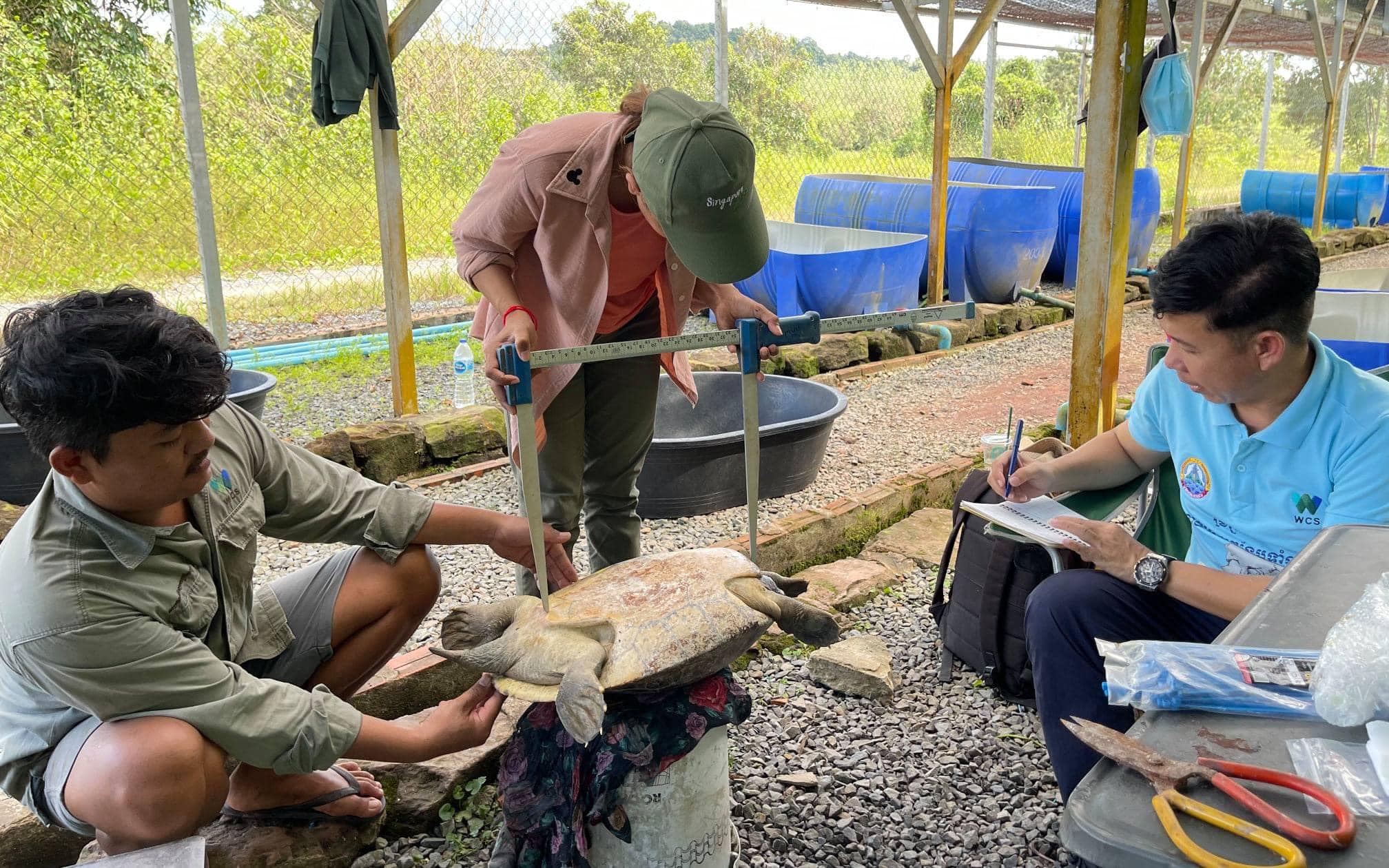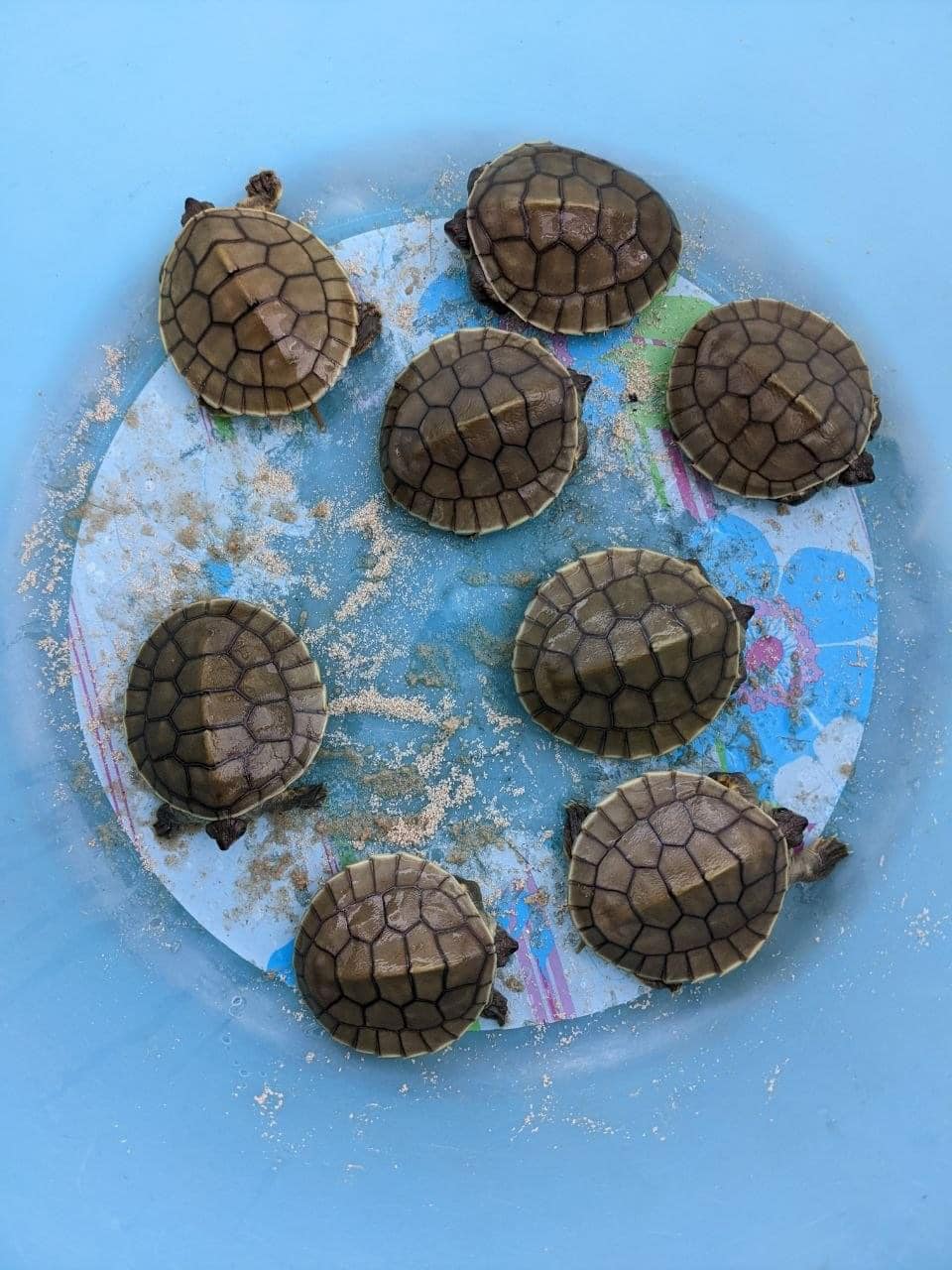PHNOM PENH: The royal turtle, a reptile representing Cambodia, was designated this name by a Royal Decree in 2005 after being rediscovered in 2000 in Koh Kong province. This turtle had been previously thought extinct in Cambodia for more than 20 years, throughout the 1980s and 1990s.
The Secretary of State and Spokesperson for the Ministry of Environment, Neth Pheaktra, recently made a post on his official Facebook page discussing the conservation of these turtles. He wrote that after the turtles were rediscovered, Cambodia has put effort into conserving and breeding these reptiles in a natural habitat.
“Currently, Cambodia has a reptile conservation center in Koh Kong province, which is a place for the conservation and breeding of royal turtles to release them back into the wild,” he wrote. “According to a study, royal turtles are present only in Prek Sre Ambel and Prek Kampong Leu in Koh Kong and Sihanoukville. To increase [the turtle’s] natural population, the Koh Kong Reptile Conservation Center has bred and hatched more than 450 baby turtles that are currently in the center's rearing department, while 147 healthy juvenile turtles have been released back in the wild between 2015 and 2021."
Royal turtles, also known as southern river terrapins (Batagur affinis), are large freshwater turtles native to Southeast Asia. The female turtles can grow up to 62.5 cm in size, and are all gray or black in color. Royal turtles can reproduce between the ages of 14 and 25. The male turtles can grow up to 49 cm in size and have clear yellow eyes and a raised nose.
The royal turtle has large front feet, similar in appearance to duck feet, and has four claws as opposed to five, which most other turtles have. The reptiles can live in rice paddies (freshwater mixed with seawater) and along streams that flow into the sea, with mangroves, oak trees, and other plants growing along the shore. Royal turtles can live up to 100 years old and are plant and fruit eating reptiles. They eat apricots, plants that grow along the canal in Prek Sre Ambel, Koh Kong province, caterpillars, beans, figs, aquatic plants such as water hyacinth and duckweed, as well as other available seasonal fruits. Occasionally, royal turtles also eat meat such as lobster and shrimp.
Royal turtles are endangered species like the Asiatic black bear, the Asian elephant, and the Indochinese leopard.
These turtles have been a historic symbol for Cambodia, having been historically protected by royal decree and considered a property of the Cambodian royal family.
History says that royal turtles and their eggs would be captured and collected by the people to give to the King and other members of the royal family. Seeing the beautiful appearance of the turtles, the King ordered for the reptiles to be guarded and protected forever, hence, people call them ‘royal turtles’ to this day.
Many Cambodians who encounter or catch royal turtles wash and anoint them and invite monks to pray for peace before releasing them back into the wild.
The royal turtle was appointed as a national symbol of Cambodia on 21 March 2005 by Royal Decree No. NS /RKOT/ 0305/149.






























